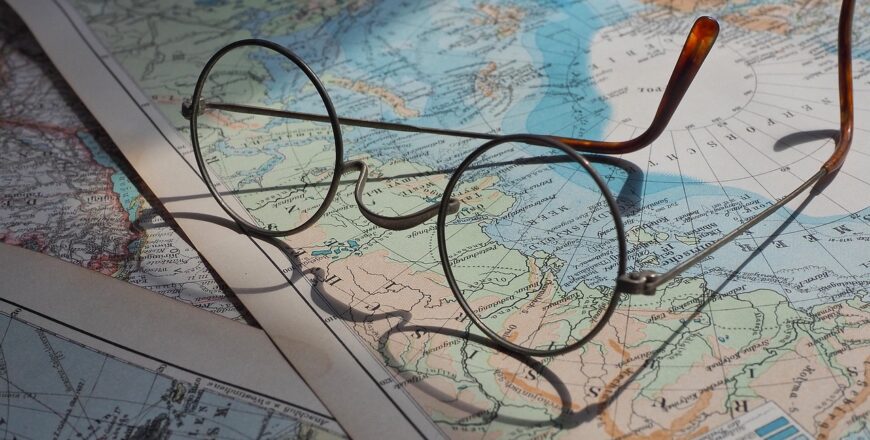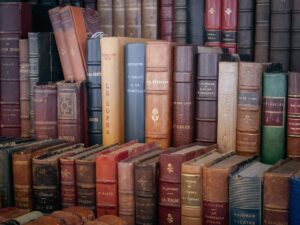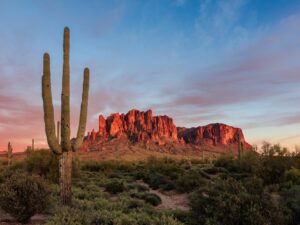Reconstructing Ancestral Neighborhoods and Networks
- Description
- Curriculum
Understanding the physical and social landscapes where our ancestors lived can be crucial to solving problems of identity, kinship, and origin. This hands-on, advanced course, for students with experience in land records and platting, offers critical skills and practical strategies for constructing community networks around elusive ancestors. We’ll explore the integration of advanced land platting techniques with modern mapping technologies and historical maps to place ancestors in a specific location, trace the development of the neighborhoods in which they lived, and uncover insights into historical relationships and migration patterns. In-class examples and exercises will also demonstrate triangulation techniques for determining approximate location from partial data and the use of reconstructed ancestral networks to identify key associates, disambiguate same-name people, and locate “missing” individuals.
Week One, February 17
Welcome and Introductions, 10:00-10:30am
Getting Oriented: Paths Into a Neighborhood, 10:30-11:45am
Instructor: Kimberly T. Powell, AG
Neighborhood reconstruction doesn’t always have to begin with a plat map or deeds. This session introduces the many ways you can begin reconstructing a historical neighborhood using records you may already have, including deeds, census records, tax lists, probate files, and historical maps. We’ll look at examples of projects that started with different records and still led to meaningful discoveries. You’ll come away with flexible options for your own research and a simple framework to track your progress throughout the course.
Laying the Groundwork: Identifying Anchor Properties, 12:15-1:30pm
Instructor: Kimberly T. Powell, AG
A common challenge in neighborhood reconstruction is figuring out how to place a person—or any historical property—on a modern map. This session focuses on finding and working with “anchor” properties: known locations that help orient your neighborhood research geographically. We’ll cover practical strategies for identifying these starting points using historical maps, modern GIS tools, and property descriptions, as well as how to connect them to other individuals through deeds and surrounding context.
Week Two, February 24
Weekly Progress Lab, 10:00-10:30am
Reconstructing Communities with Census Records, 10:30-11:45am
Instructor: Kimberly T. Powell, AG
Learn how to effectively use census records to reconstruct ancestral communities and place census neighbors on a map. This session will teach you how to map individuals enumerated in the census who do not appear on landowners’ maps and may not have owned land. Reconstructed neighborhood examples will also demonstrate the importance of understanding that census order does not always represent neighborhood order.
Middle Ground: Researching Land Records in Both Directions, 12:15-1:30
Instructor: Kimberly T. Powell, AG and Gerald H. Smith, CG
Learn techniques for tracing land ownership forward and backward from any point in time. This session will explore strategies for identifying landowners using deeds, grants, and other records, helping you piece together families and communities.
Week Three, March 10
Weekly Progress Lab, 10:00-10:30am
Reconstructing Neighborhoods in Western New York: A Case Study – Part One, 10:30-11:45am
Instructor: Mack D. “Skip” Duett
This two-part module highlights key New York land records, survey systems, and map resources needed to reconstruct neighborhoods in New York State. Hands-on mini exercises will develop skills to address property description and map quirks. Students will then walk through a case study neighborhood reconstruction in Western New York within the Holland Land Purchase. Survey and lotting system concepts are presented followed by hands-on exercises to reinforce these concepts. Beginning with a core group of deed abstracts, students will map out a portion of a township then use grantor/grantee indices, deed books, census and the FamilySearch full-text search tool to add in additional landowners.
Reconstructing Neighborhoods in Western New York: A Case Study – Part Two, 12:15-1:30pm
Instructor: Mack D. “Skip” Duett
Week Four, March 17
Weekly Progress Lab, 10:00-10:30am
Anchoring Ancestral Neighborhoods with GIS Resources, 10:30-11:45am
Instructor: Kimberly T. Powell, AG
This session provides practical guidance on using GIS property maps as a starting point for neighborhood research. Learn how to access and interpret GIS resources and explore strategies for connecting modern parcels to historical deeds. Integrating GIS mapping with traditional land title research allows us to anchor our ancestral neighborhood to its physical location and can serve as a workaround for tracing properties with imprecise property descriptions.
Bridging the Gaps: Working Around Missing Land Transactions, 12:15-1:30
Instructor: Kimberly T. Powell, AG
Discover effective strategies for overcoming record gaps when researching property forward or back in time. This session will explore common causes of missing records, how to use alternative sources, and creative problem-solving techniques to bridge these gaps effectively.
Week Five, March 24
Weekly Progress Lab, 10:00-10:30am
Solving Parentage & Identity Conflicts with Migration Cluster Research: Case Study Workshop – Part One, 10:30-11:45am
Instructor: Rebecca Whitman Koford, CG, CGL
This interactive lecture follows a complex family group from Virginia to Georgia. Applied organizational methods clarified analysis and group migrations patterns assisted in correctly identifying one man’s parents and correcting the identification of other men in his cluster. Students will participate in organization and analysis exercises for this case study to find proof.
Solving Parentage & Identity Conflicts with Migration Cluster Research: Case Study Workshop – Part Two, 12:15-1:30
Instructor: Rebecca Whitman Koford, CG, CGL
Week Six, March 31
Weekly Progress Lab, 10:00-10:30am
Crucial Connections: Identifying Neighbors and Networks, 10:30-11:45am
Instructors: Kimberly T. Powell, AG and Gerald H. Smith, CG
Discover techniques for identifying the neighbors and social networks of your ancestors using diverse and often overlooked records. This session will build on the effective use of census data by incorporating historical maps, tax lists, legislative petitions, military records, store ledgers, court records, probate inventories, and other lesser-used sources to reconstruct the geographical and social landscape of your ancestors.
Organizing the Chaos, 12:15-1:30pm
Instructor: Kimberly T. Powell, AG
Neighborhood research quickly generates a flood of names, parcels, and documents. This session offers practical tools to help you stay organized and make sense of incomplete or scattered information. We’ll explore different approaches to managing research using a variety of tools, focusing on what to track and how to track it. You’ll learn how to set up a system that works for your goals and evolve it as your project grows.
Week Seven, April 7
Weekly Progress Lab, 10:00-10:30am
Mapping Urban Communities with Google Earth Pro: Part One, 10:30-11:45am
Instructor: Colleen Robledo Greene, MLIS, FTxSGS
This session will demonstrate techniques for reconstructing an urban Mexican community using historical maps overlaid on present-day jurisdictions and streets in Google Earth Pro. Weaving in data from censuses, city directories, newspapers, and vital records, you’ll learn how to plot out where extended family groups lived and worked and get a better sense of the community in which they lived. You’ll also learn how digital tools like Google Earth Pro and ArcGIS can reveal spatial patterns and connections between people and places.
Mapping Urban Communities with Google Earth Pro: Part Two, 12:15-1:30pm
Instructor: Colleen Robledo Greene, MLIS, FTxSGS
Week Eight, April 14
Weekly Progress Lab, 10:00-10:30am
Silent Neighborhoods: Mapping Ancestral Communities in American Cemeteries, 10:30-11:45am
Instructor: Melinda Kashuba, PhD
In this session, students will explore American cemeteries, where each gravestone tells a story. We’ll examine the history, design, and evolution of these grounds and how they reflect the cultural and social dynamics of their times. We’ll cover various methods for mapping cemeteries, including GPS tools like BillionGraves and Find a Grave. Students will learn to map cemetery neighborhoods, uncovering family, ethnic, and social connections of the past. Join us to understand the iconography and symbols on gravestones and discover how these silent neighborhoods can enhance your genealogical research.
Philadelphia Catholics to Ireland, 12:15-1:30pm
Instructor: Gerald H. Smith, CG
Building the American neighborhood and community can provide the necessary leverage to locate the European village of origin for the family. This session provides a case study where reconstruction in American church records leads to family origin in Ireland.
Week Nine, April 21
Weekly Progress Lab, 10:00-10:30am
TBA, 10:30-11:45
Using Federal Records to Help Map Rural Neighborhoods, 12:15-1:30pm
Instructor: Kimberly T. Powell, AG
Yes, federal records can be useful for reconstructing and mapping rural communities too. This session will cover lesser-used federal resources, including records of the Southern Claims Commission and U.S. Court of Claims, Freedmen’s Bureau, Works Project Administration, and Internal Revenue Service, providing practical techniques for integrating these and similar materials into your neighborhood research.
Week Ten, April 28
Weekly Progress Lab, 10:00-10:30am
Incorporating Industrial Records, 10:30-11:45am
Instructor: Gerald H. Smith, CG
Industry practices as early as the 1700s resulted in industry and business records that can assist in reconstructing communities. Company towns, banks, and industrial records are resources. Discussion includes repositories for industrial records.
Making Sense of Your Discoveries & Next Steps, 12:15-1:30pm
Instructor: Kimberly T. Powell, AG
Your project may still feel incomplete and that’s okay! Network research can take a lot of time. In this session, we’ll focus on the connections you did find—what patterns emerged, what surprised you, and how mapping those relationships helped clarify (or complicate) your original questions. We’ll also talk about making sense of gaps, deciding what’s worth pursuing next, and recognizing that even messy, partial discoveries can offer valuable insights.
Discussion and Q&A/Course Wrap-up, 1:30-2:00pm

Classes will be held Tuesdays, beginning 17 February until 28 April. There will be no class on 3 March due to RootsTech.
Sessions run from 10am-2pm Mountain Time.
Course Coordinator:
Additional Faculty:
Mack D. "Skip" Duett
Colleen Robledo Greene, MLIS, FTxSGS
Melinda Kashuba, PhD
Rebecca Whitman Koford, CG, CGL






